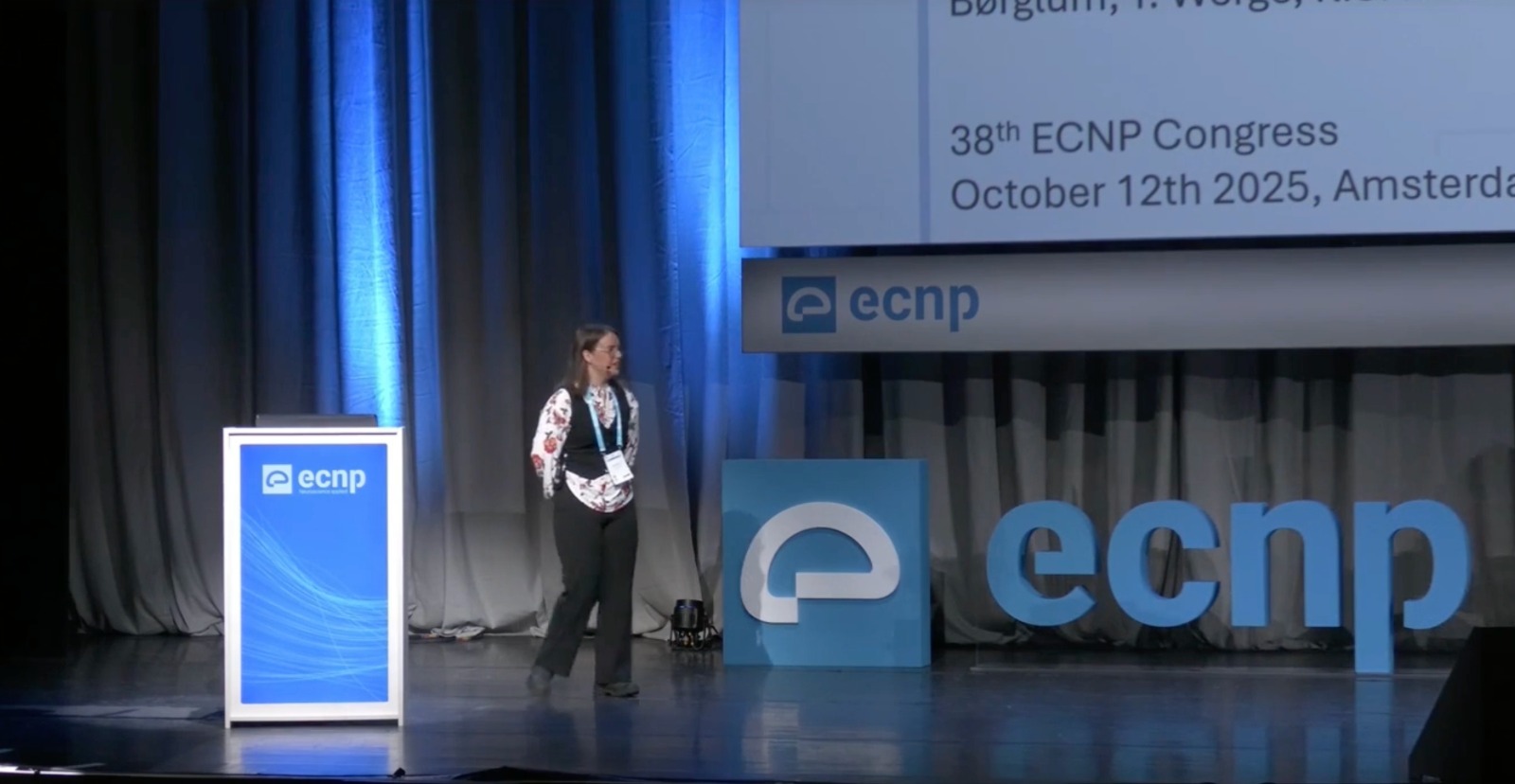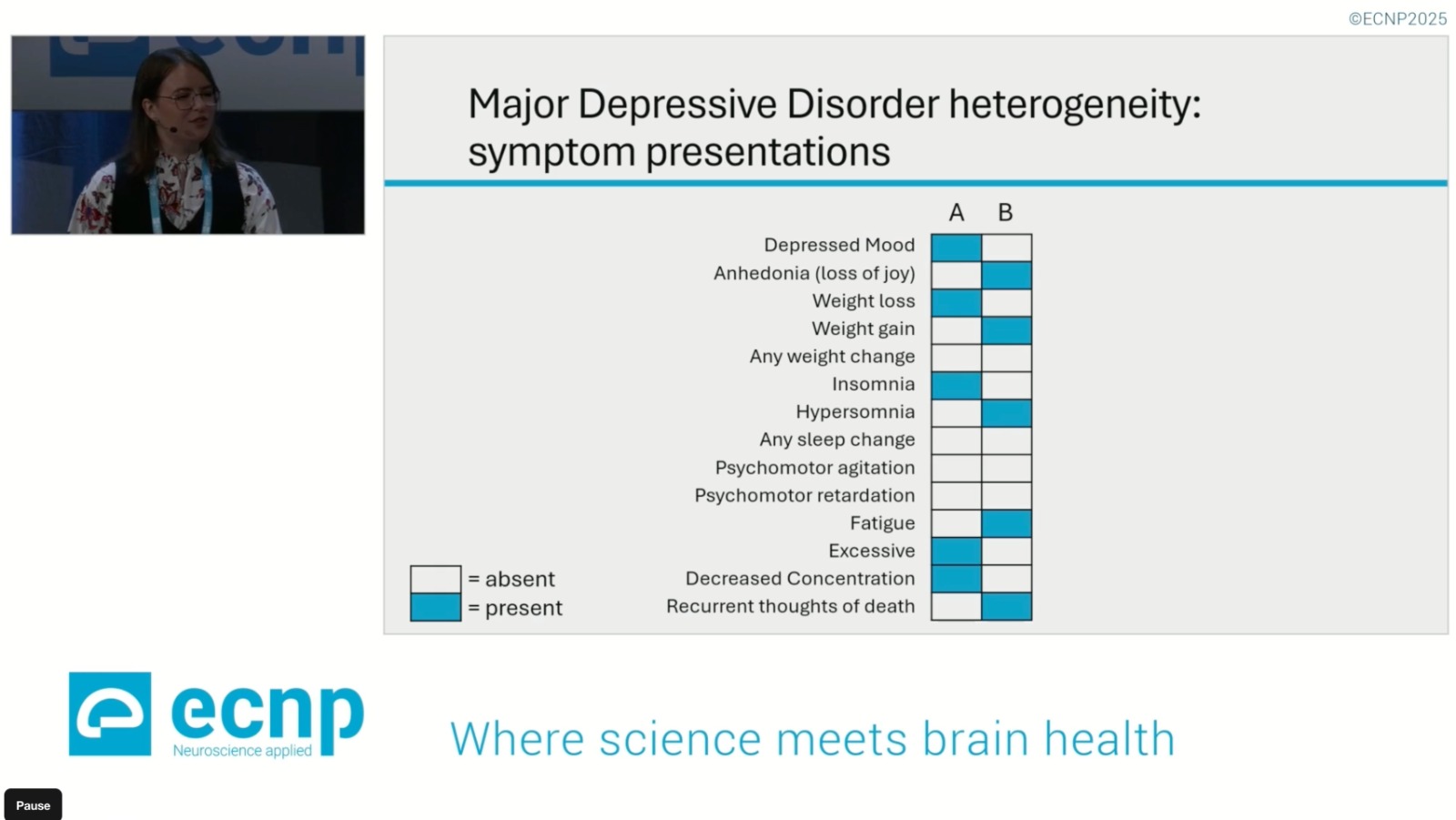


I had the great honor of attending this year’s ECNP conference in Amsterdam after being invited to present my PhD work and latest preprint at the symposium on depression heterogeneity, hosted by Prof. Dr. Brenda Penninx. Surrounded by established researchers, the invitation felt all the more meaningful.
I am incredibly thankful for the experience. The positive feedback I received afterwards was very rewarding. Various audience members contacted me after the presentation with collaboration ideas and inspiration to apply our work to their research.
As an invited speaker, I was officially part of the ECNP faculty. This role also granted me an invitation to the faculty event, which proved to be a unique networking opportunity. There, I connected with a wide range of people, including clinicians working on bipolar disorder research and researchers focusing on psychedelic treatments. While these topics are quite different from my own genetics-focused work, I found their dedication to real-world impact particularly inspiring. The insights and conversations from that evening are ones I will carry with me for a long time to come.
I’m deeply grateful to have had the opportunity to share the important work we’ve done. I hope its impact will only grow after publication. For those interested, the slides of my presentation are available here, and includes details on the Coordinated Epistasis framework that forms the central dogma of our research. In my talk, I also explained how we use Pearson-Aitken family genetic risk scores to power our framework and address a wide range of questions.
Beyond my presentation, the ECNP conference itself was a fascinating experience. Compared to the more genetics-centered conferences I’m used to, ECNP struck me as much more focused on clinical impact, especially with the involvement of so many clinicians and the abundance of animal-model research.
A session that particularly stood out for me was a panel discussion on which brain—Drosophila, mouse, monkey, or human—is best for studying cognition and conducting pharmacological research. The diversity of approaches to similar scientific questions was truly inspiring and highlighted both the interdisciplinarity of the conference and the broader field of neuropharmacology. I’ll definitely be taking this mindset into my future work; there’s a lot we can learn from each other.
Disclosure: this blogpost was drafted by Jolien Rietkerk but edited by chatUMCG (chatGPT implemented for the UMCG)

Leave a Reply